Simulation Standard
Technical Journal
A Journal for Process and Device Engineers
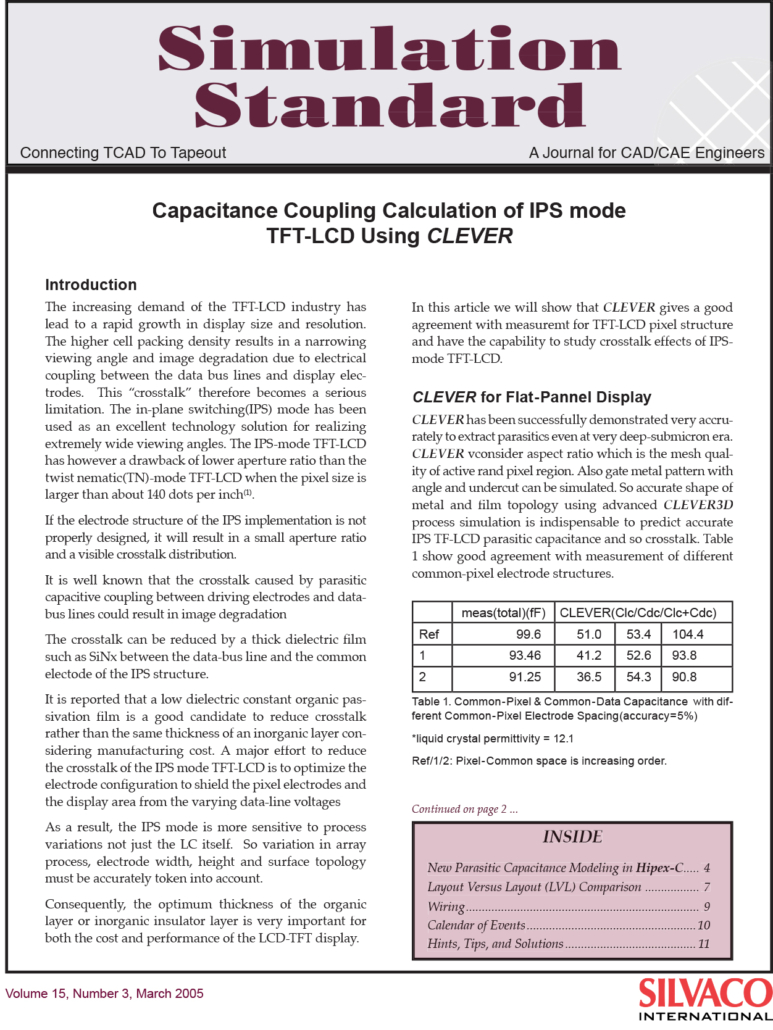
Capacitance Coupling Calculation of IPS mode TFT-LCD Using Clever
The increasing demand of the TFT-LCD industry has lead to a rapid growth in display size and resolution. The higher cell packing density results in a narrowing viewing angle and image degradation due to electrical coupling between the data bus lines and display electrodes. This “crosstalk” therefore becomes a serious limitation. The in-plane switching(IPS) mode has been used as an excellent technology solution for realizing extremely wide viewing angles.
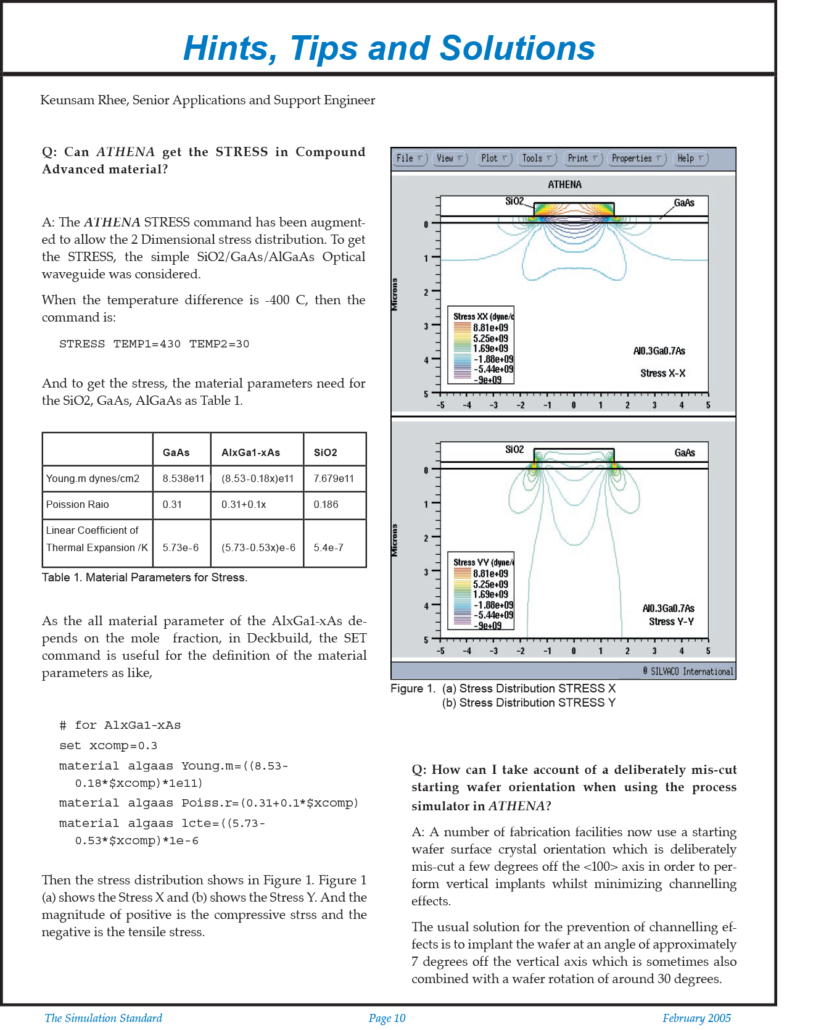
Can Athena get the STRESS in Compound Advanced material?
Q: Can ATHENA get the STRESS in Compound Advanced material?A: The ATHENA STRESS command has been augmented to allow the 2 Dimensional stress distribution. To get the STRESS, the simple SiO2/GaAs/AlGaAs Optical waveguide was considered.
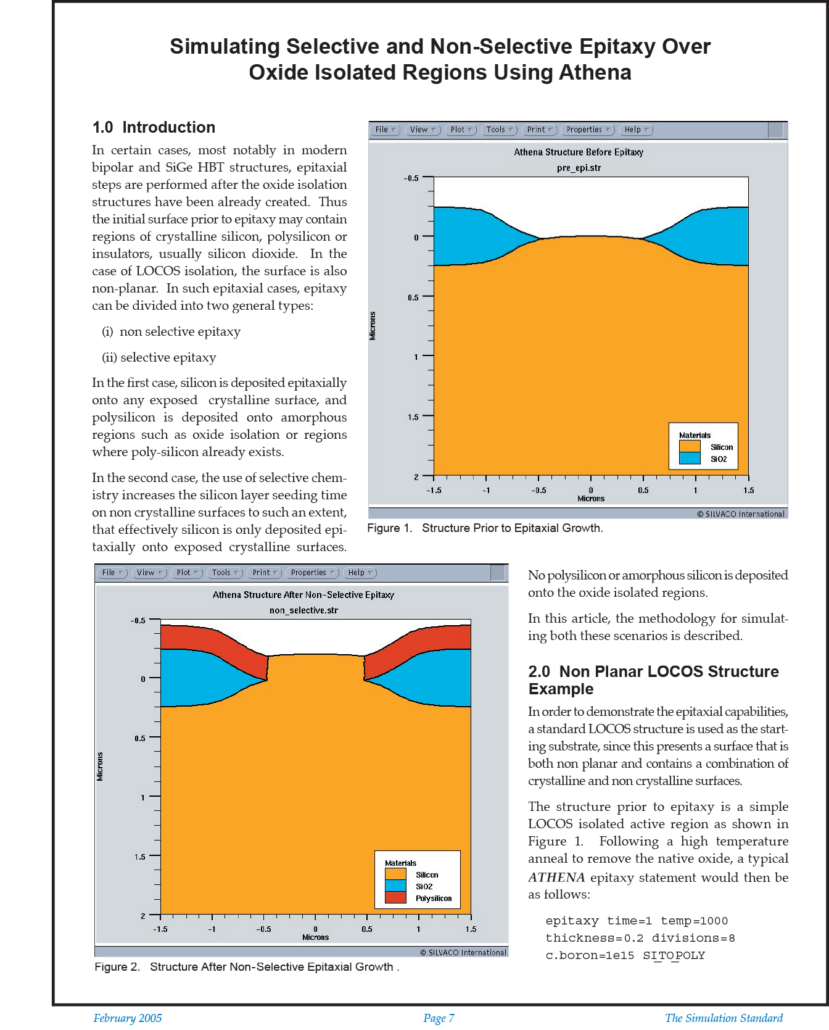
Simulating Selective and Non-Selective Epitaxy Over Oxide Isolated Regions Using Athena
In certain cases, most notably in modern bipolar and SiGe HBT structures, epitaxial steps are performed after the oxide isolation structures have been already created. Thus the initial surface prior to epitaxy may contain regions of crystalline silicon, polysilicon or insulators, usually silicon dioxide. In the case of LOCOS isolation, the surface is also non-planar.
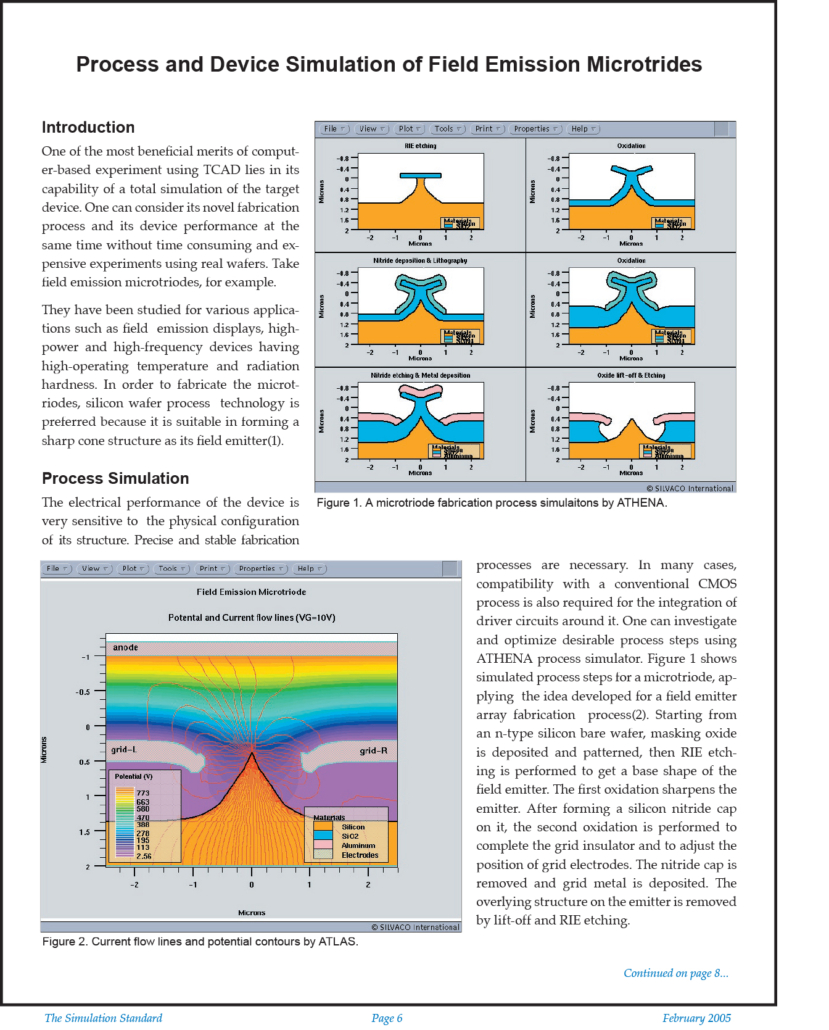
Process and Device Simulation of Field Emission Microtrides
One of the most beneficial merits of computer-based experiment using TCAD lies in its capability of a total simulation of the target device. One can consider its novel fabrication process and its device performance at the same time without time consuming and expensive experiments using real wafers. Take field emission microtriodes, for example.
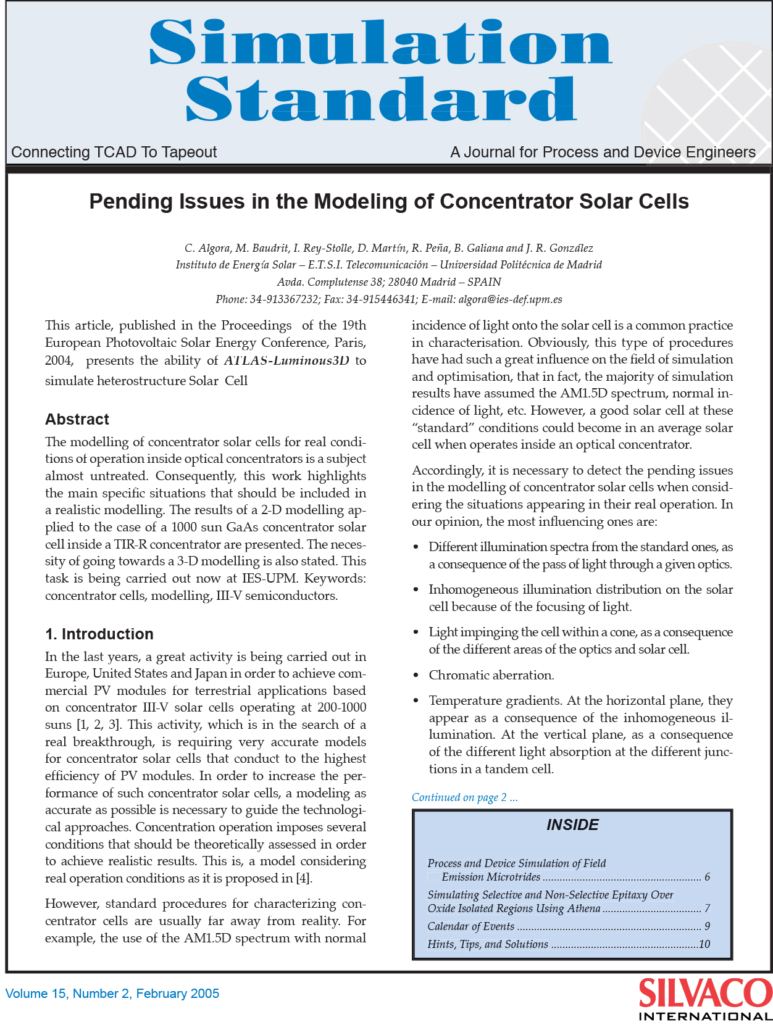
Pending Issues in the Modeling of Concentrator Solar Cells
The modelling of concentrator solar cells for real conditions of operation inside optical concentrators is a subject almost untreated. Consequently, this work highlights the main specific situations that should be included in a realistic modelling. The results of a 2-D modelling applied to the case of a 1000 sun GaAs concentrator solar cell inside a TIR-R concentrator are presented. The necessity of going towards a 3-D modelling is also stated. This task is being carried out now at IES-UPM. Keywords: concentrator cells, modelling, III-V semiconductors.
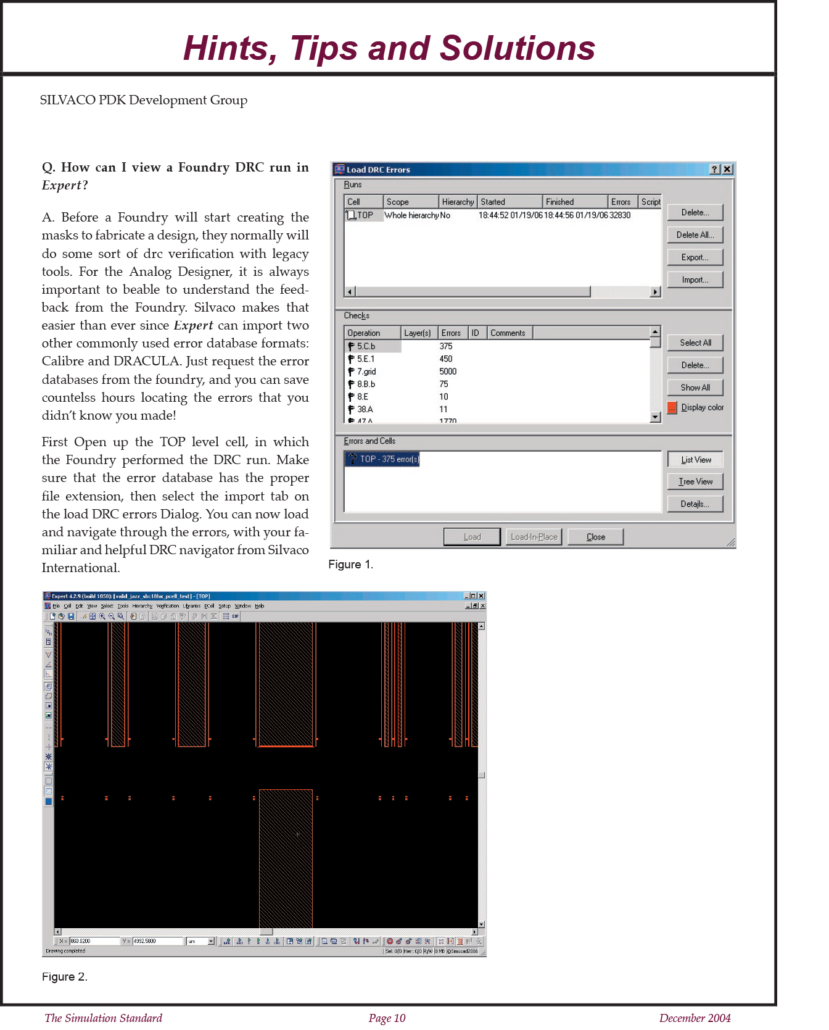
How can I view a Foundry DRC run in Expert?
Q: How can I view a Foundry DRC run in Expert?A: Before a Foundry will start creating the masks to fabricate a design, they normally will do some sort of drc verification with legacy tools. For the Analog Designer, it is always important to beable to understand the feedback from the Foundry. Silvaco makes that easier than ever since Expert can import two other commonly used error database formats: Calibre and DRACULA. Just request the error databases from the foundry, and you can save countelss hours locating the errors that you didn’t know you made!

